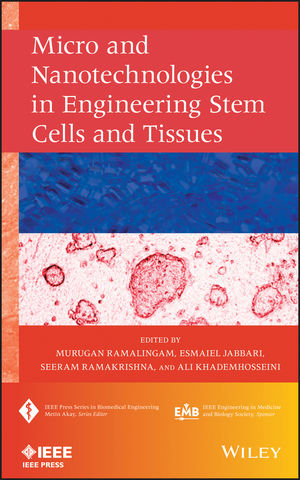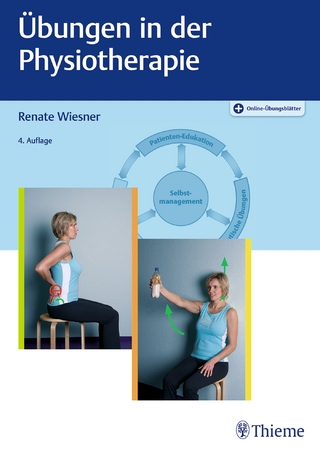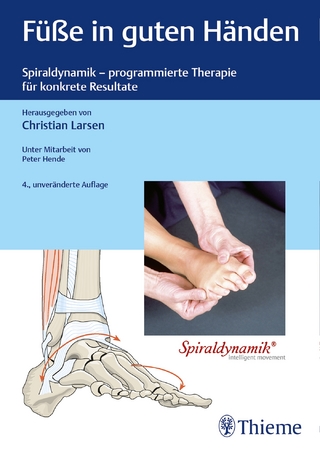
Micro and Nanotechnologies in Engineering Stem Cells and Tissues
Wiley-IEEE Press (Verlag)
978-1-118-14042-0 (ISBN)
A cutting-edge look at the application of micro and nanotechnologies in regenerative medicine
The area at the interface of micro/nanotechnology and stem cells/tissue engineering has seen an explosion of activity in recent years. This book provides a much-needed overview of these exciting developments, covering all aspects of micro and nanotechnologies, from the fundamental principles to the latest research to applications in regenerative medicine.
Written and edited by the top researchers in the field, Micro and Nanotechnologies in Engineering Stem Cells and Tissues describes advances in material systems along with current techniques available for cell, tissue, and organ studies. Readers will gain tremendous insight into the state of the art of stem cells and tissue engineering, and learn how to use the technology in their own research or clinical trials. Coverage includes:
Technologies for controlling or regulating stem cell and tissue growth
Various engineering approaches for stem cell, vascular tissue, and bone regeneration
The design and processing of biocompatible polymers and other biomaterials
Characterization of the interactions between cells and biomaterials
Unrivaled among books of this kind, Micro and Nanotechnologies in Engineering Stem Cells and Tissues is the ultimate forward-looking reference for researchers in numerous disciplines, from engineering and materials science to biomedicine, and for anyone wishing to understand the trends in this transformative field.
MURUGAN RAMALINGAM, PhD, is Associate Professor in the Centre for Stem Cell Research (a unit of Institute for Stem Cell Biology and Regenerative Medicine, Bengaluru) at the Christian Medical College, Vellore, India. He is well known for his pioneering work on gradient biomaterials, stem cell engineering, and soft-to-hard interface tissue engineering. ESMAIEL JABBARI, PhD, is Associate Professor of Chemical and Biomedical Engineering and Adjunct Professor of Orthopedic Surgery at the University of South Carolina. An internationally known researcher, he has published extensively on biomaterials, drug delivery, and tissue engineering. SEERAM RAMAKRISHNA, PhD, is Professor of Mechanical Engineering and Bioengineering at the National University of Singapore. He is well known for his pioneering work on electrospinning of nanofibers. ALI KHADEMHOSSEINI, PhD, is Associate Professor at the Harvard-MIT Division of Health Sciences and Technology, Brigham and Women's Hospital, and Harvard Medical School.
Preface xiii
Contributors xv
1 Stem Cells and Nanotechnology in Tissue Engineering and Regenerative Medicine 1
1.1 A Brief History of Tissue Engineering and Regenerative Medicine, 1
1.2 Introduction to Stem Cells, 3
1.3 Tissue Engineering and Regenerative Medicine Strategies, 5
1.4 Nanotechnology in Regenerative Medicine and Tissue Engineering, 8
1.5 Conclusions, 19
2 Nanofiber Technology for Controlling Stem Cell Functions and Tissue Engineering 27
2.1 Introduction, 27
2.2 Fabrication of Nanofibrous Scaffolds by Electrospinning, 30
2.3 Stem Cells: Type, Origin, and Functionality, 32
2.4 Stem Cell–Nanofiber Interactions in Regenerative Medicine and Tissue Engineering, 35
2.5 Conclusions, 44
3 Micro- and Nanoengineering Approaches to Developing Gradient Biomaterials Suitable for Interface Tissue Engineering 52
3.1 Introduction, 52
3.2 Classification of Gradient Biomaterials, 54
3.3 Micro- and Nanoengineering Techniques for Fabricating Gradient Biomaterials, 59
3.4 Conclusions, 70
4 Microengineered Polymer- and Ceramic-Based Biomaterial Scaffolds: A Topical Review on Design, Processing, and Biocompatibility Properties 80
4.1 Introduction, 80
4.2 Dense Hydroxyapatite Versus Porous Hydroxyapatite Scaffold, 85
4.3 Property Requirement of Porous Scaffold, 86
4.4 Design Criteria and Critical Issues with Porous Scaffolds for Bone Tissue Engineering, 88
4.5 An Exculpation of Porous Scaffolds, 90
4.6 Overview of Various Processing Techniques of Porous Scaffold, 92
4.7 Overview of Physicomechanical Properties Evaluation of Porous Scaffold, 95
4.8 Overview of Biocompatibility Properties: Evaluation of Porous Scaffolds, 104
4.9 Outstanding Issues, 107
4.10 Conclusions, 109
5 Synthetic Enroutes to Engineer Electrospun Scaffolds for Stem Cells and Tissue Regeneration 119
5.1 Introduction, 119
5.2 Synthetic Enroutes, 125
5.3 Novel Nanofibrous Strategies for Stem Cell Regeneration and Differentiation, 131
5.4 Conclusions, 135
6 Integrating Top-Down and Bottom-Up Scaffolding Tissue Engineering Approach for Bone Regeneration 142
6.1 Introduction, 142
6.2 Clinic Needs in Bone Regeneration Fields, 143
6.3 Bone Regeneration Strategies and Techniques, 144
6.4 Future Direction and Concluding Remarks, 151
7 Characterization of the Adhesive Interactions Between Cells and Biomaterials 159
7.1 Introduction, 159
7.2 Adhesion Receptors in Native Tissue, 160
7.3 Optimization of Cellular Adhesion Through Biomaterial Modification, 166
7.4 Measurement of Cell Adhesion, 170
7.5 Conclusions, 174
8 Microfluidic Formation of Cell-Laden Hydrogel Modules for Tissue Engineering 183
8.1 Introduction, 183
8.2 Cell-Laden Hydrogel Modules, 184
8.3 Cell Assay Systems Using Microfluidic Devices, 189
8.4 Implantable Applications, 191
8.5 Tissue Engineering, 194
8.6 Summary, 198
9 Micro- and Nanospheres for Tissue Engineering 202
9.1 Introduction, 202
9.2 Materials Classification of Micro- and Nanospheres, 204
9.3 Applications of Micro- and Nanospheres in Tissue Engineering, 205
9.4 Conclusions, 212
10 Micro- and Nanotechnologies to Engineer Bone Regeneration 220
10.1 Introduction, 220
10.2 Nano-Hydroxyapatite Reinforced Scaffolds, 221
10.3 Biodegradable Polymeric Scaffolds and Nanocomposites, 225
10.4 Silk Fibers and Scaffolds, 227
10.5 Summary, 231
11 Micro- and Nanotechnology for Vascular Tissue Engineering 236
11.1 Introduction, 236
11.2 Conventional Vascular Grafts, 237
11.3 Tissue-Engineered Vascular Grafts, 237
11.4 Micro- and Nanotopography in Vascular Tissue Engineering, 238
11.5 Micro- and Nanofibrous Scaffolds in Vascular Tissue Engineering, 241
11.6 Microvascular Tissue Engineering, 246
11.7 Conclusions, 253
12 Application of Stem Cells in Ischemic Heart Disease 261
12.1 Introduction, 261
12.2 Adult Skeletal Myoblast Cells, 267
12.3 Adult Bone Marrow–Derived Stem Cells, 269
12.4 Type of Stem Cells Used to Treat Cardiac Diseases, 273
12.5 Application, 277
12.6 Other Developing Technologies in Cell Engineering, 282
Acknowledgments, 293
References, 293
Index 303
| Reihe/Serie | IEEE Press Series on Biomedical Engineering |
|---|---|
| Sprache | englisch |
| Maße | 163 x 243 mm |
| Gewicht | 680 g |
| Themenwelt | Medizin / Pharmazie ► Physiotherapie / Ergotherapie ► Orthopädie |
| Technik ► Medizintechnik | |
| Technik ► Umwelttechnik / Biotechnologie | |
| ISBN-10 | 1-118-14042-7 / 1118140427 |
| ISBN-13 | 978-1-118-14042-0 / 9781118140420 |
| Zustand | Neuware |
| Informationen gemäß Produktsicherheitsverordnung (GPSR) | |
| Haben Sie eine Frage zum Produkt? |
aus dem Bereich


